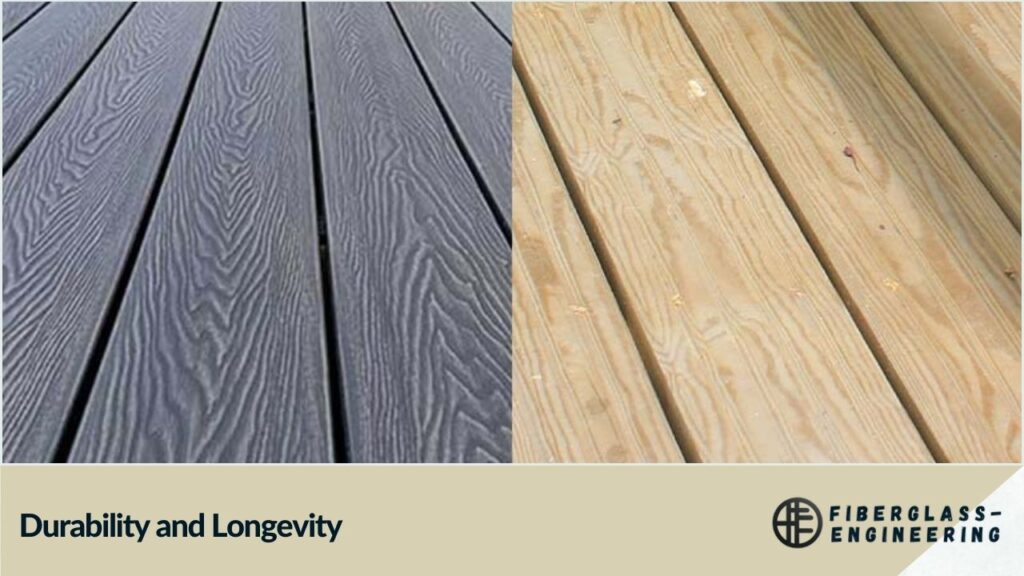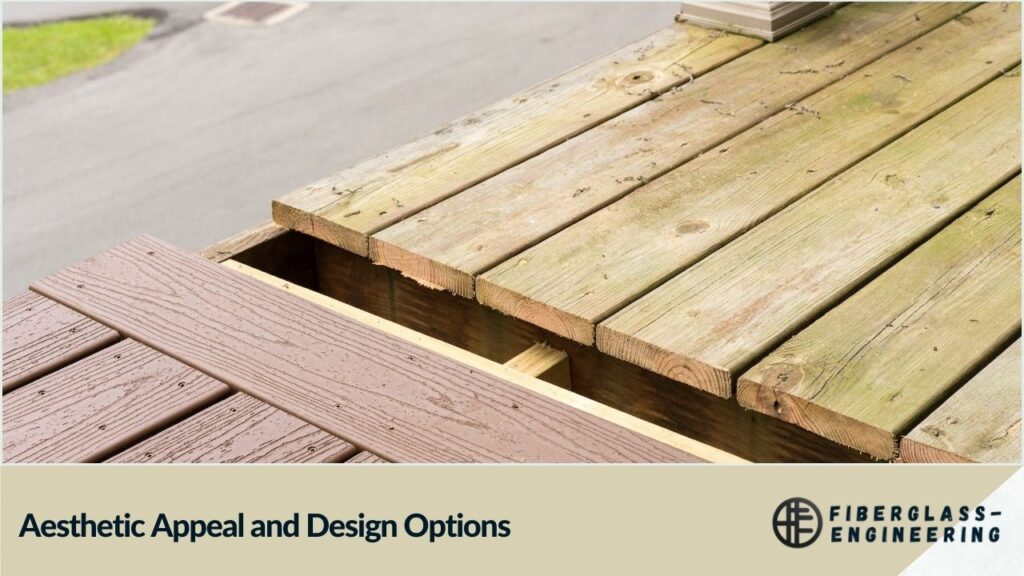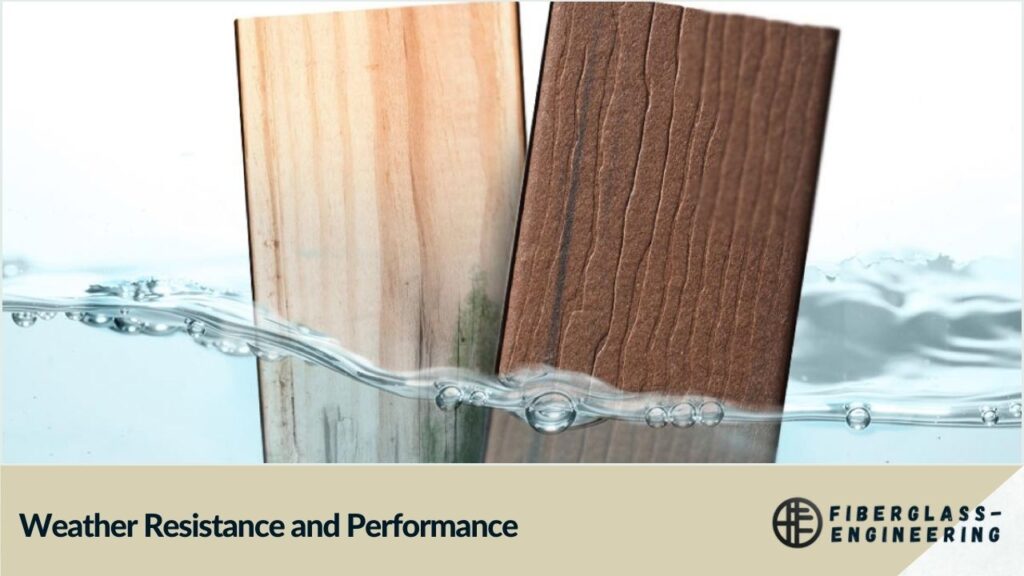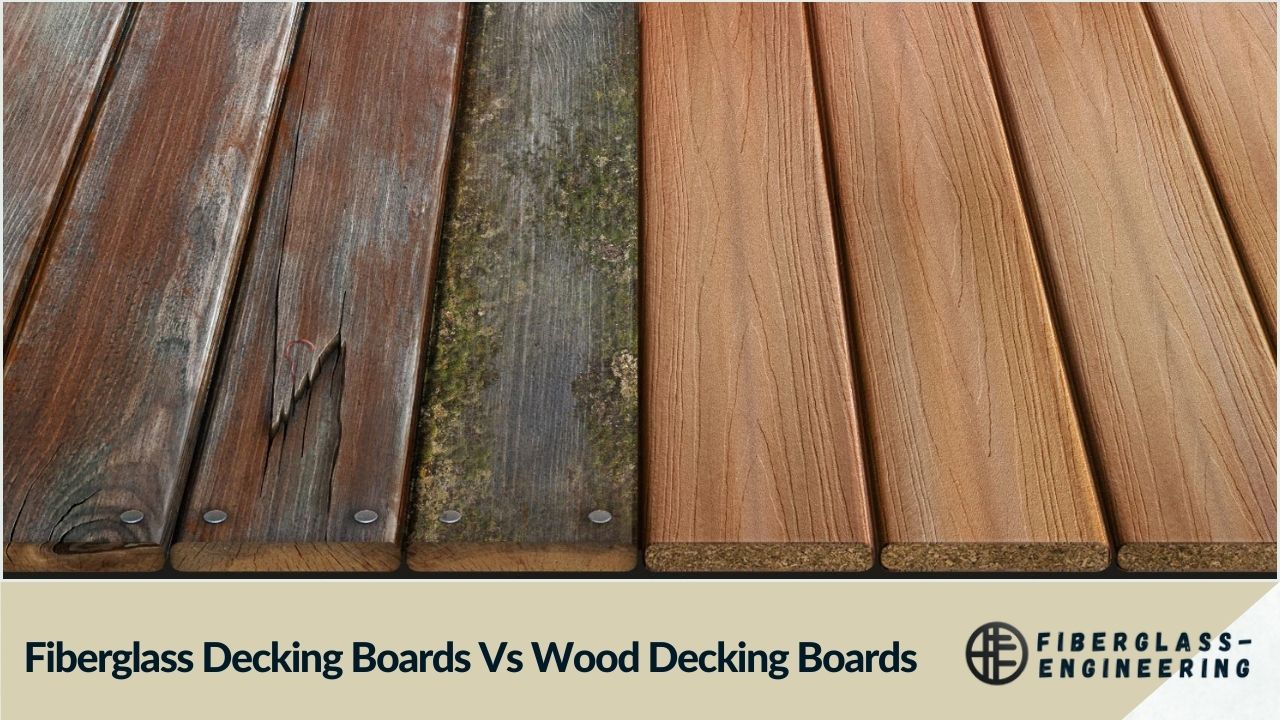When it comes to choosing the right material for your deck, the decision between fiberglass decking boards and wood decking boards can be challenging. Both options have their unique advantages and drawbacks, and understanding these differences is crucial for making an informed decision. This article will provide a detailed comparison of fiberglass decking boards and wood decking boards, examining various aspects such as durability, maintenance, cost, aesthetics, and environmental impact.
Durability and Longevity

One of the most significant factors to consider when choosing decking materials is their durability and longevity. Fiberglass decking boards have a clear advantage in this area. Fiberglass is an incredibly strong and weather-resistant material, making it an excellent choice for outdoor applications. Unlike wood, fiberglass is impervious to moisture, rot, and insect damage, which significantly extends its lifespan.
Wood decking boards, on the other hand, are more susceptible to environmental factors. Even with regular maintenance, wood can warp, crack, or splinter over time. However, the durability of wood decking can vary greatly depending on the type of wood used. Hardwoods like ipe or teak are naturally more resistant to decay and insects compared to softwoods like pine.
Maintenance Requirements
The maintenance needs of your decking material can significantly impact your long-term satisfaction with your choice. Fiberglass decking boards are known for their low maintenance requirements. They don't need to be sealed, stained, or painted regularly. A simple cleaning with soap and water is usually sufficient to keep fiberglass decking looking great for years.
Wood decking boards, in contrast, require more frequent and intensive maintenance. To preserve their appearance and structural integrity, wood decks need to be cleaned, sanded, and resealed or restained every few years. This ongoing maintenance can be time-consuming and costly over the life of the deck.
Initial and Long-term Costs
When comparing the costs of fiberglass and wood decking boards, it's essential to consider both the initial investment and long-term expenses. Fiberglass decking boards typically have a higher upfront cost compared to most wood options. However, the long-term cost equation may favor fiberglass due to its lower maintenance requirements and longer lifespan.
Wood decking boards are generally less expensive initially, especially if you choose pressure-treated pine or other common softwoods. However, the ongoing costs of maintenance, including materials and labor for regular sealing and staining, can add up over time. Additionally, wood decks may need partial or complete replacement sooner than fiberglass decks, which could result in higher long-term costs.
Aesthetic Appeal and Design Options

The visual appeal of your deck is a crucial factor in your decision-making process. Wood decking boards offer a classic, natural look that many homeowners prefer. The warmth and character of real wood grain are difficult to replicate, and wood can be stained or painted in a wide range of colors to match your home's exterior.
Fiberglass decking boards have come a long way in terms of aesthetics. Modern manufacturing techniques allow fiberglass to mimic the look of wood quite convincingly. Fiberglass decking is available in various colors and textures, providing flexibility in design. However, some homeowners still prefer the authentic look and feel of natural wood.
Environmental Considerations
As environmental concerns become increasingly important, it's worth considering the ecological impact of your decking choice. Wood is a renewable resource, which gives it an advantage in terms of sustainability. However, the environmental impact of wood decking depends on factors such as the source of the wood and the treatments used to preserve it.
Fiberglass decking boards are not biodegradable, which is a potential environmental drawback. However, they don't require the use of harmful chemicals for maintenance, and their longevity means less frequent replacement and potentially less waste over time. Some fiberglass manufacturers are also incorporating recycled materials into their products, improving their environmental profile.
Weather Resistance and Performance

The ability of your decking material to withstand various weather conditions is crucial, especially in areas with extreme climates. Fiberglass decking boards excel in this aspect. They are highly resistant to temperature fluctuations, UV rays, and moisture. Fiberglass doesn't expand or contract significantly with temperature changes, which helps prevent warping and maintains the integrity of the deck structure.
Wood decking boards can be more sensitive to weather conditions. They may expand and contract with changes in temperature and humidity, potentially leading to warping, cracking, or cupping. However, proper installation techniques and regular maintenance can mitigate these issues to some extent.
Safety and Comfort
Safety is a paramount concern for any decking material. Fiberglass decking boards often have a slight advantage in this area. Many fiberglass decking products are designed with textured surfaces that provide excellent slip resistance, even when wet. They also tend to stay cooler underfoot in direct sunlight compared to some wood options.
Wood decking can become slippery when wet, although this can be mitigated with proper sealing and the application of anti-slip treatments. Some types of wood, particularly darker colors, can become quite hot in direct sunlight, which may be uncomfortable for bare feet.
Installation Considerations
The ease of installation can affect both the initial cost and the overall project timeline. Wood decking boards are generally easier to work with and can be cut and fastened using standard carpentry tools. This can make wood a more DIY-friendly option for those with some construction experience.
Fiberglass decking boards may require specialized tools and techniques for cutting and fastening. While professional installers are typically familiar with these requirements, it may present a challenge for DIY enthusiasts. However, some fiberglass decking systems are designed for easier installation, with features like hidden fasteners that can improve the overall look of the finished deck.
Lifespan and Warranty

The expected lifespan of your decking material is a crucial factor in determining its overall value. Fiberglass decking boards generally have a longer lifespan than wood, with many manufacturers offering warranties of 25 years or more. Some high-quality fiberglass decking products can last 30 years or longer with proper care.
Wood decking boards typically have a shorter lifespan, especially in harsh climates or if not properly maintained. The lifespan of a wood deck can vary greatly depending on the type of wood and level of maintenance, but generally ranges from 10 to 25 years.
Conclusion
Choosing between fiberglass decking boards and wood decking boards ultimately depends on your specific needs, preferences, and budget. Fiberglass offers superior durability, low maintenance, and excellent weather resistance, making it a great choice for those looking for a long-lasting, low-upkeep option. Wood, on the other hand, provides natural beauty and warmth, and can be more budget-friendly initially.
Consider factors such as your local climate, how much time you're willing to devote to maintenance, your budget for both initial and long-term costs, and your aesthetic preferences. By carefully weighing these factors, you can make an informed decision that will result in a beautiful, functional deck that meets your needs for years to come.
FAQs
- Are fiberglass decking boards more expensive than wood?
Initially, yes, but they may be more cost-effective long-term due to lower maintenance costs and longer lifespan. - How long do fiberglass decking boards last?
With proper care, fiberglass decking can last 30 years or more, often outlasting wood decking. - Do fiberglass decking boards require special maintenance?
No, they typically only need occasional cleaning with soap and water. - Can fiberglass decking boards mimic the look of real wood?
Yes, modern fiberglass decking is available in various wood-like textures and colors. - Are wood decking boards more environmentally friendly?
Wood is renewable, but fiberglass may be more eco-friendly long-term due to its durability and lack of chemical treatments.

